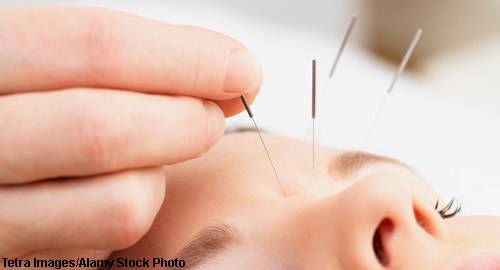 A systematic review and meta-analysis has revealed that patients who receive electrotherapy and/or acupuncture after total knee arthroplasty (TKA) may have a reduced and delayed need for opioid treatment. Dario Tedesco, MD, a postdoctoral research fellow at Stanford University in California, and colleagues sought to determine which non-pharmacological interventions used to treat postoperative pain are effective for TKA patients. They published their findings online Aug. 16 in JAMA Surgery.1
A systematic review and meta-analysis has revealed that patients who receive electrotherapy and/or acupuncture after total knee arthroplasty (TKA) may have a reduced and delayed need for opioid treatment. Dario Tedesco, MD, a postdoctoral research fellow at Stanford University in California, and colleagues sought to determine which non-pharmacological interventions used to treat postoperative pain are effective for TKA patients. They published their findings online Aug. 16 in JAMA Surgery.1
The team identified 5,509 studies that they winnowed down to 39 randomized clinical trials published between 1991 and 2015 to include in the meta-analysis. The researchers then conducted sensitivity analyses to address possible changes in opioid consumption across the study period. The sensitivity analysis found that changes in opioid consumption over time were not a significant factor in the conclusions.
“Although past studies have investigated individual non-pharmaceutical interventions for different postoperative outcomes after TKA, to our knowledge, this meta-analysis is the first comprehensive study to examine the most frequent treatments, adding new evidence on drug consumption,” write the authors in their conclusions.
The investigators categorized the 39 randomized clinical trials based on two outcomes: pain relief and analgesic consumption, as well as the five most commonly performed interventions, which are continuous passive motion, preoperative exercise, cryotherapy, electrotherapy and acupuncture. The trials included 2,391 patients and were highly heterogeneous regarding timing and interventions.
The researchers identified evidence of moderate certainty indicating that electrotherapy reduced the use of opioids and that acupuncture delayed opioid use. The clinical trials evaluated multiple approaches to electrotherapy, including a pulsed electromagnetic field and transcranial direct current stimulation. However, the researchers found evidence only of low certainty that electrotherapy or acupuncture improve pain relief.
“Our findings showed that acupuncture pain relief benefits concentrate in the early postoperative phase, but are ineffective in the long run,” write the authors in their discussion. “A delay in opioid consumption can be considered a proxy of lower pain levels; high postoperative pain can lead to chronic pain. Our results suggest that acupuncture led to a modest delay in PCA [patient-controlled analgesia] requests, leading to possible benefits in this critical time window.”
In addition to the moderate evidence supporting the use of electrotherapy and acupuncture, the authors found evidence of very low certainty that cryotherapy reduced opioid consumption and improved pain. The studies of cryotherapy included such approaches as intermittent ice blocks, continuous cold therapy and cold compression dressing.
“We found less evidence that cryotherapy reduced opioid and NSAID consumption,” explain the authors in their discussion. “[Although] a Cochrane review article reported a small benefit of cryotherapy for pain at two days after surgery, but not at one and three days, our results demonstrated very low certainty evidence for this intervention on postoperative analgesia after TKA.”
